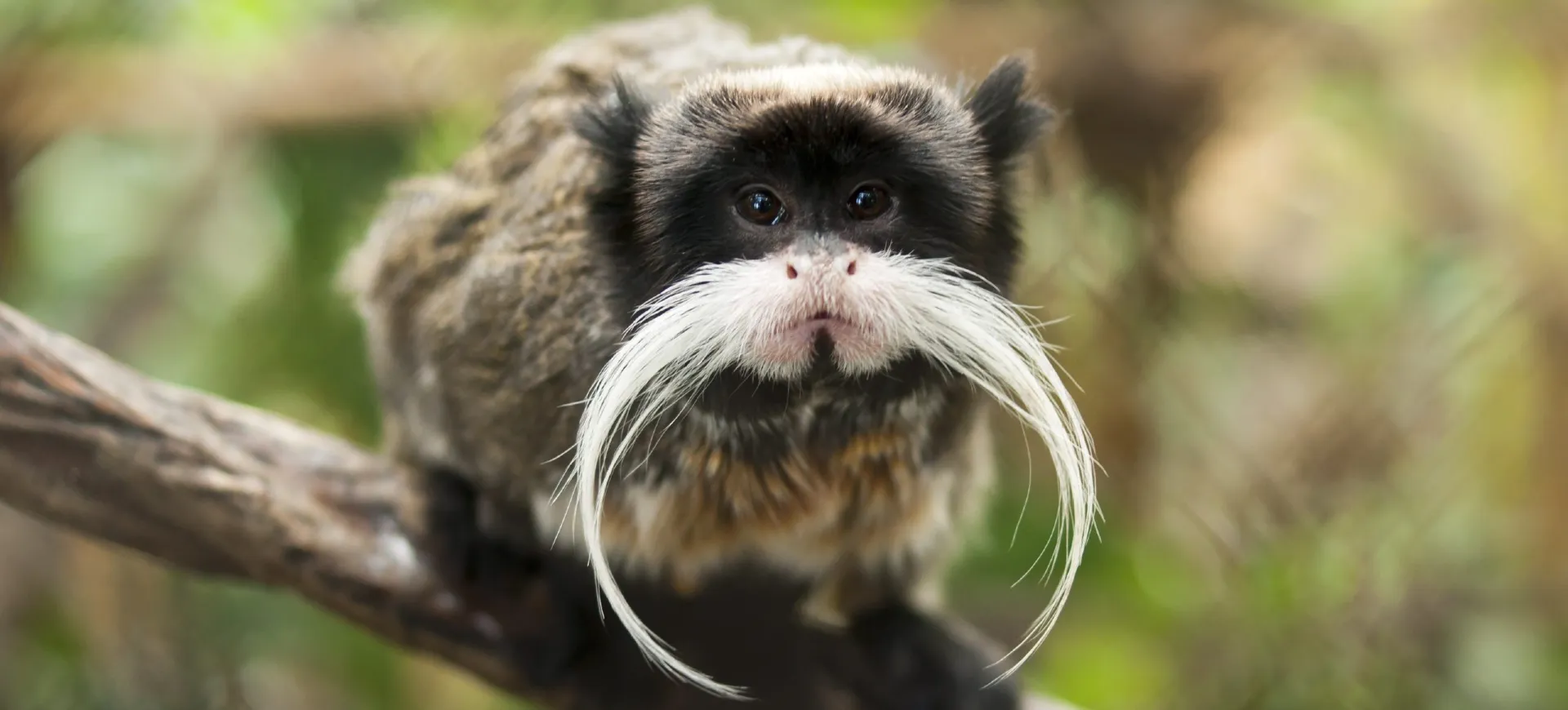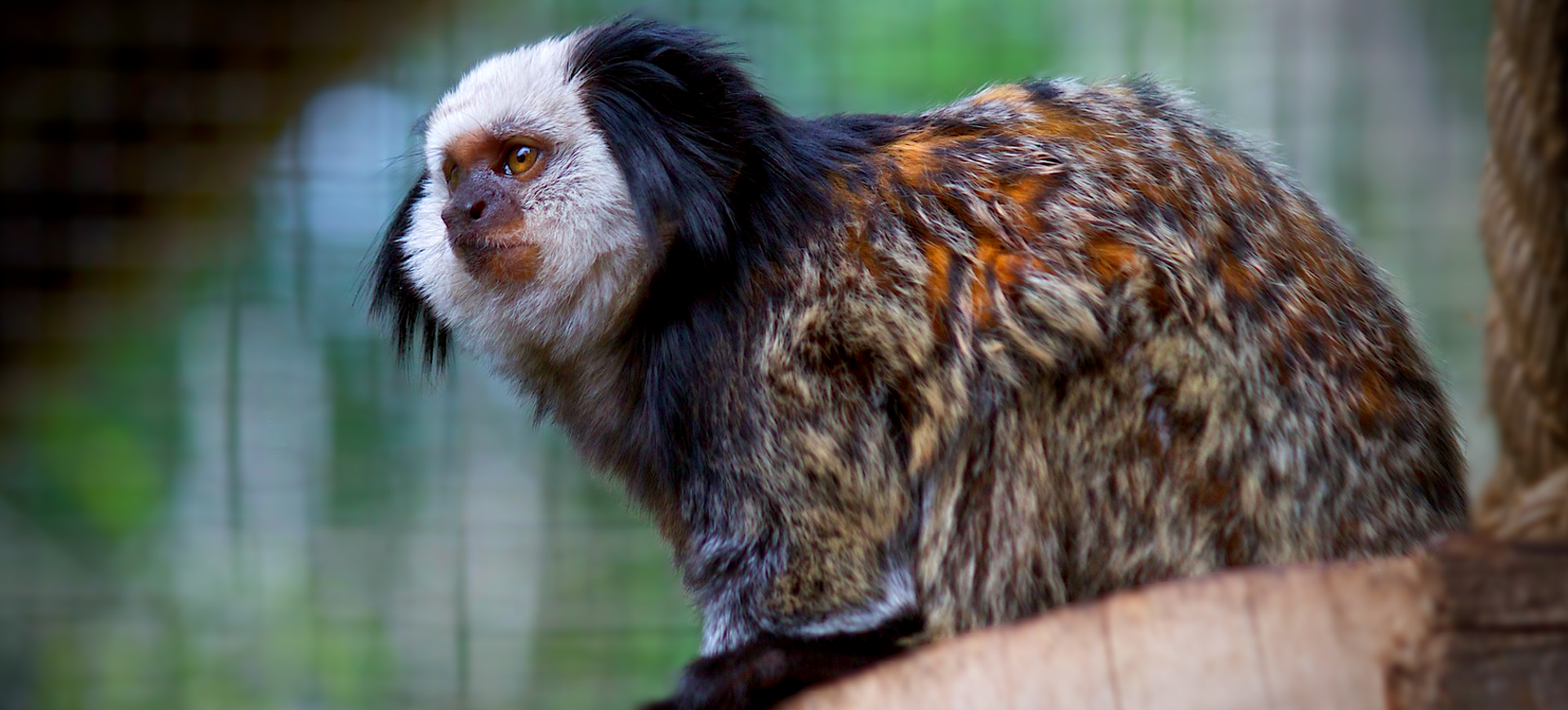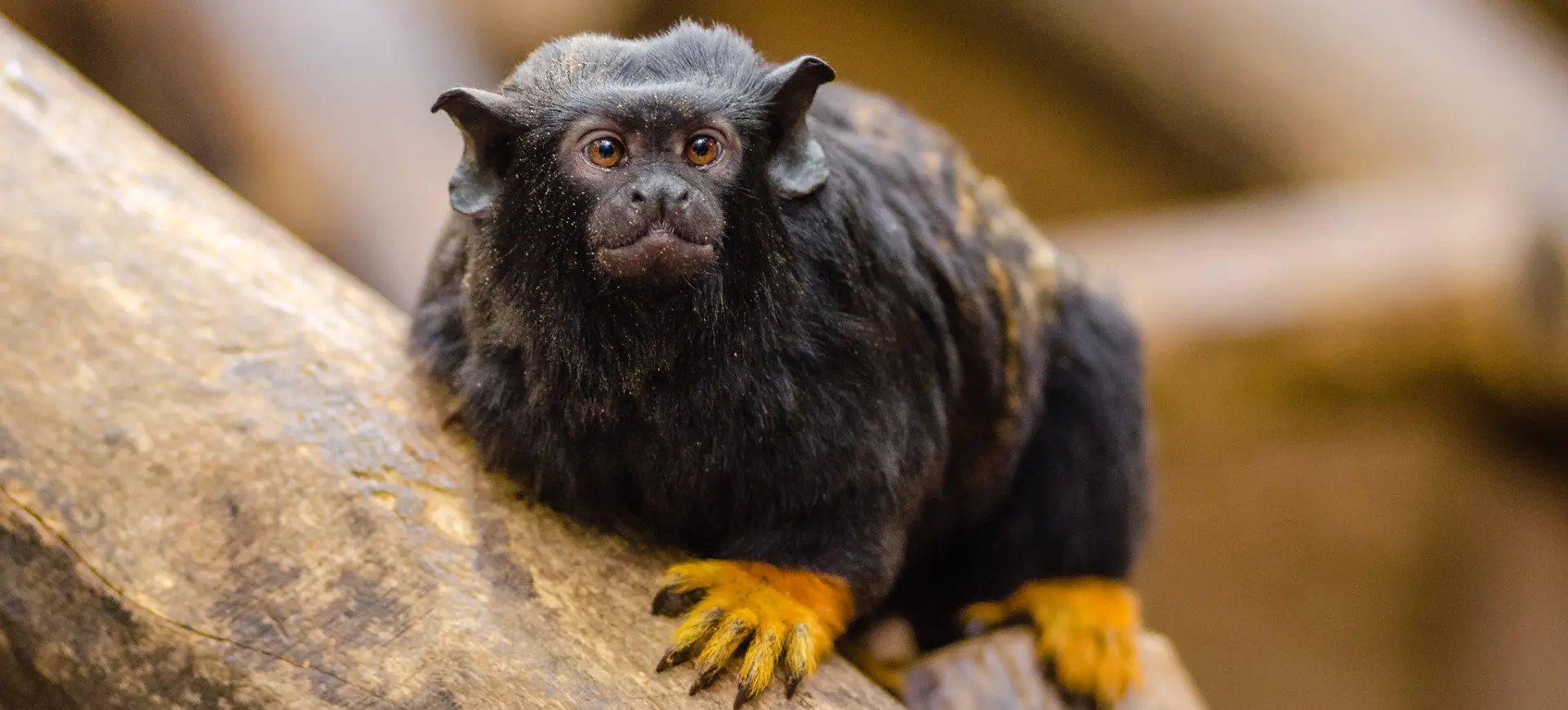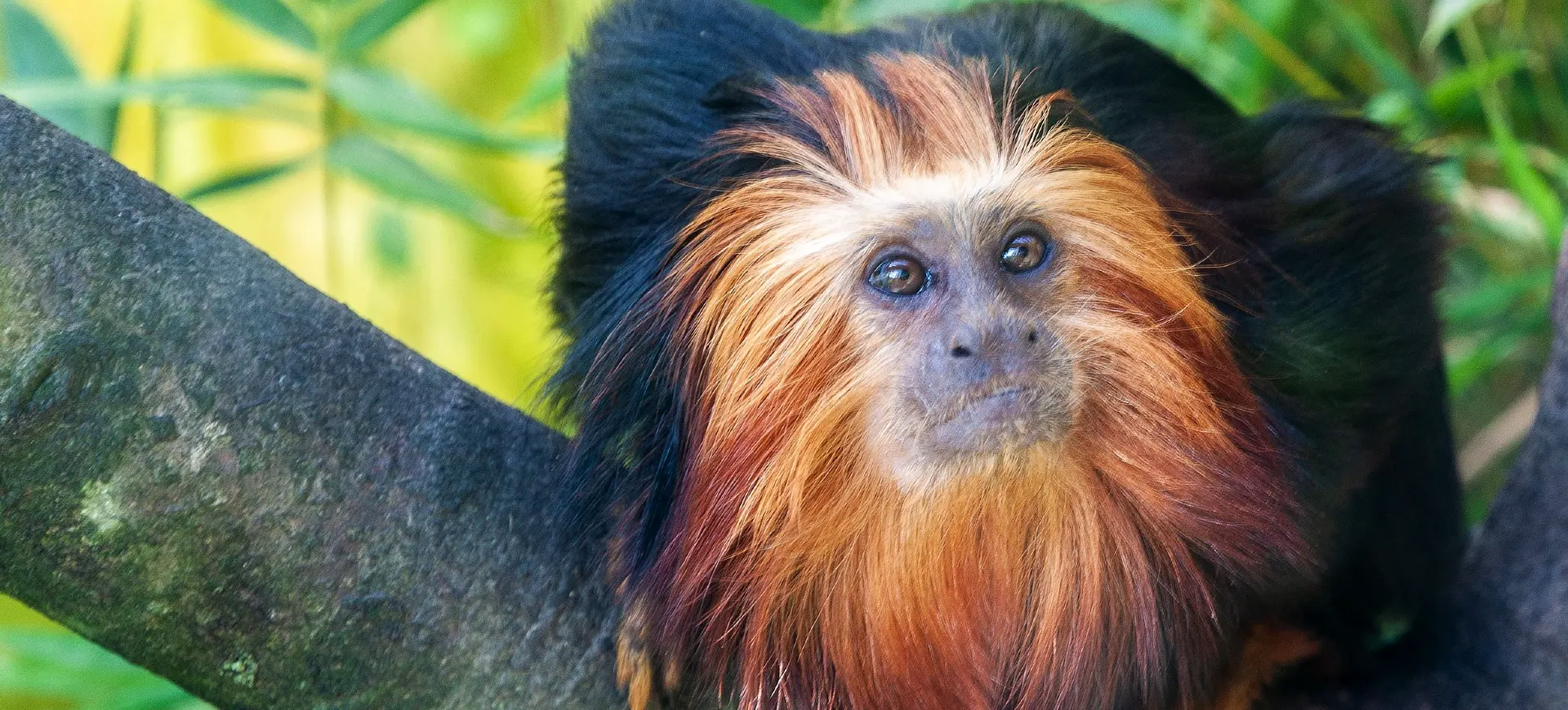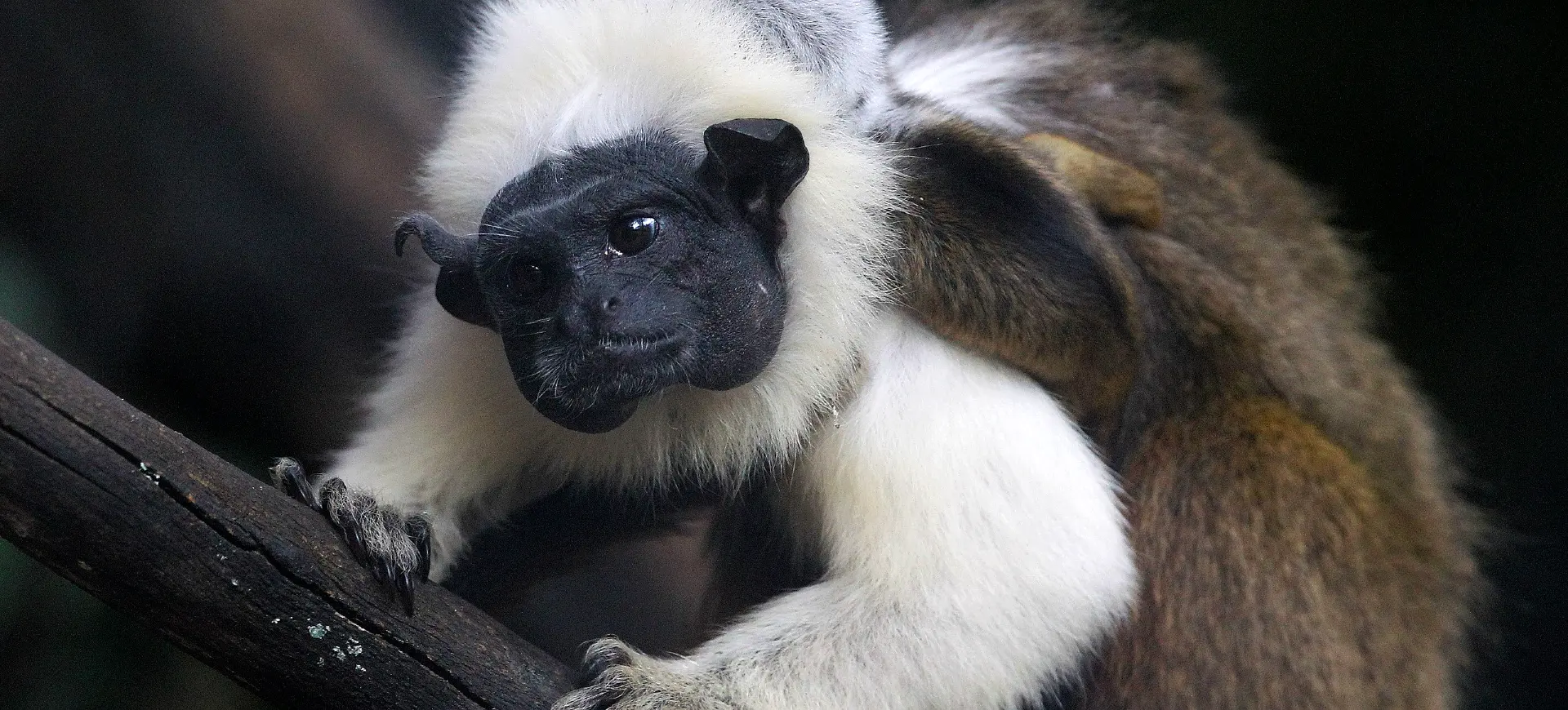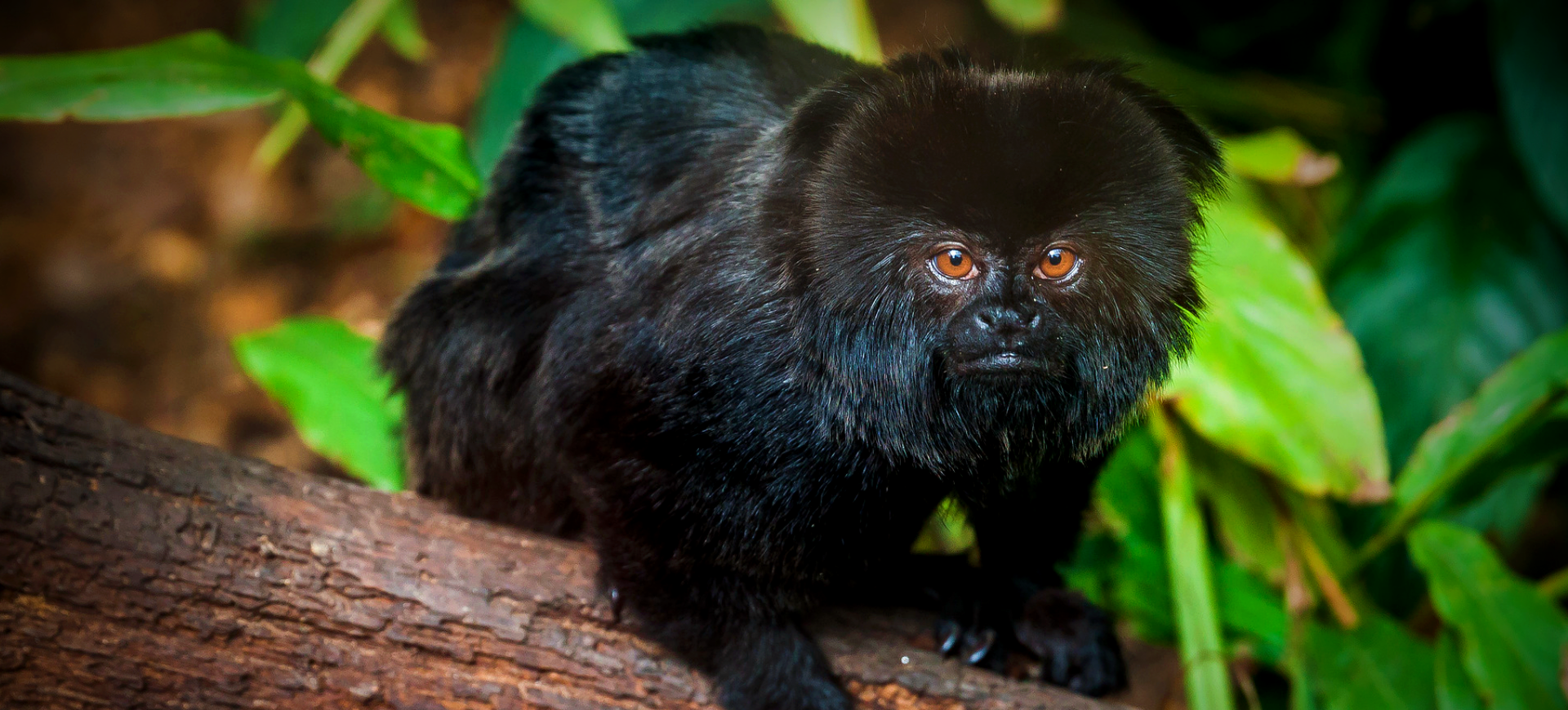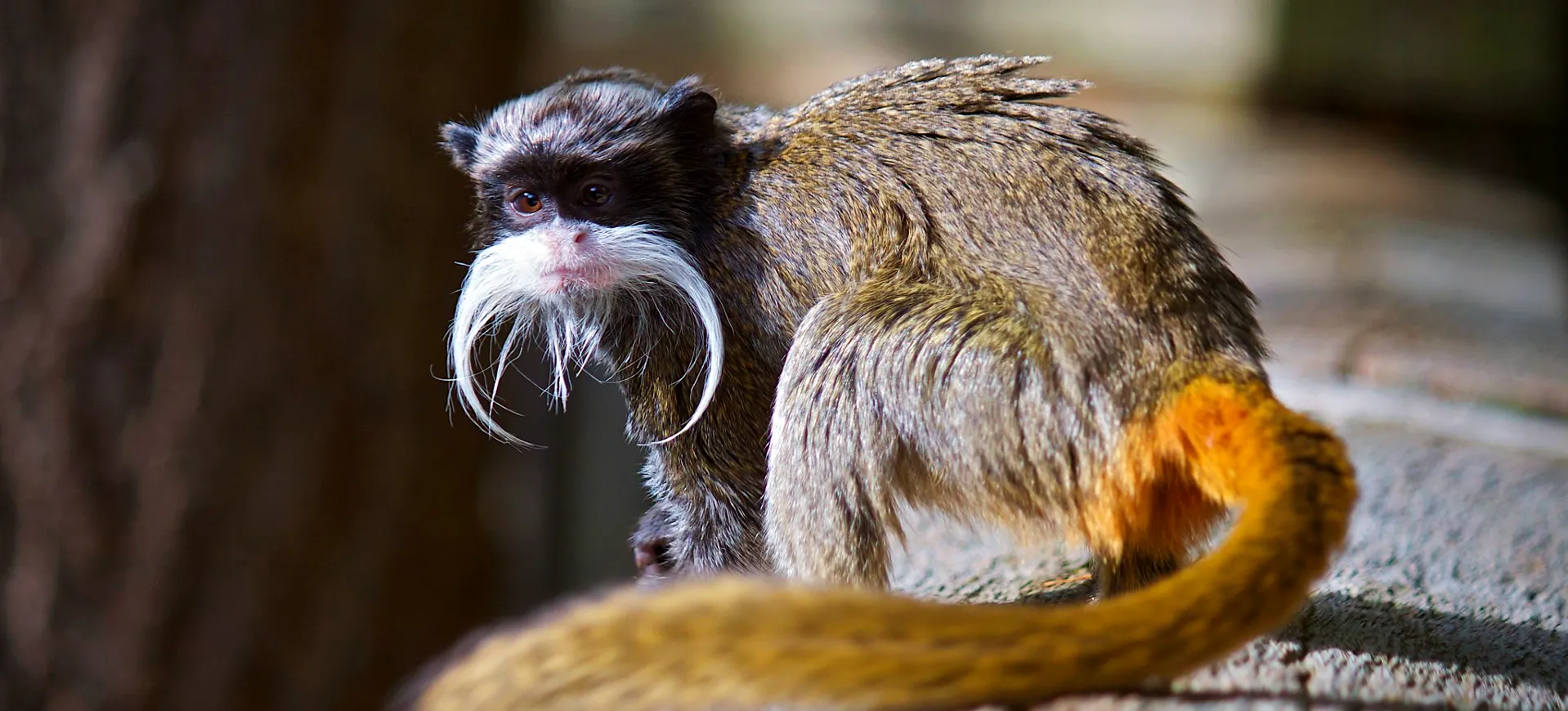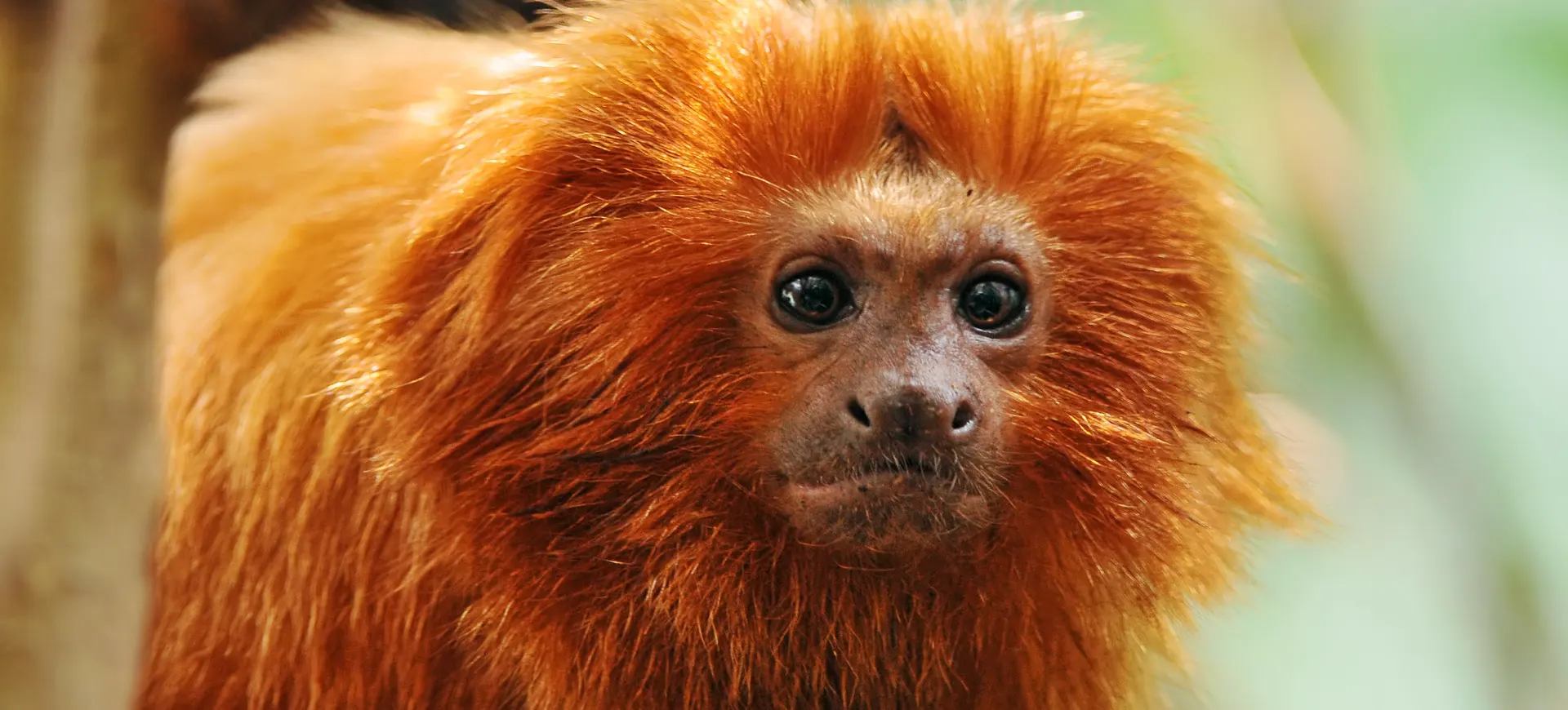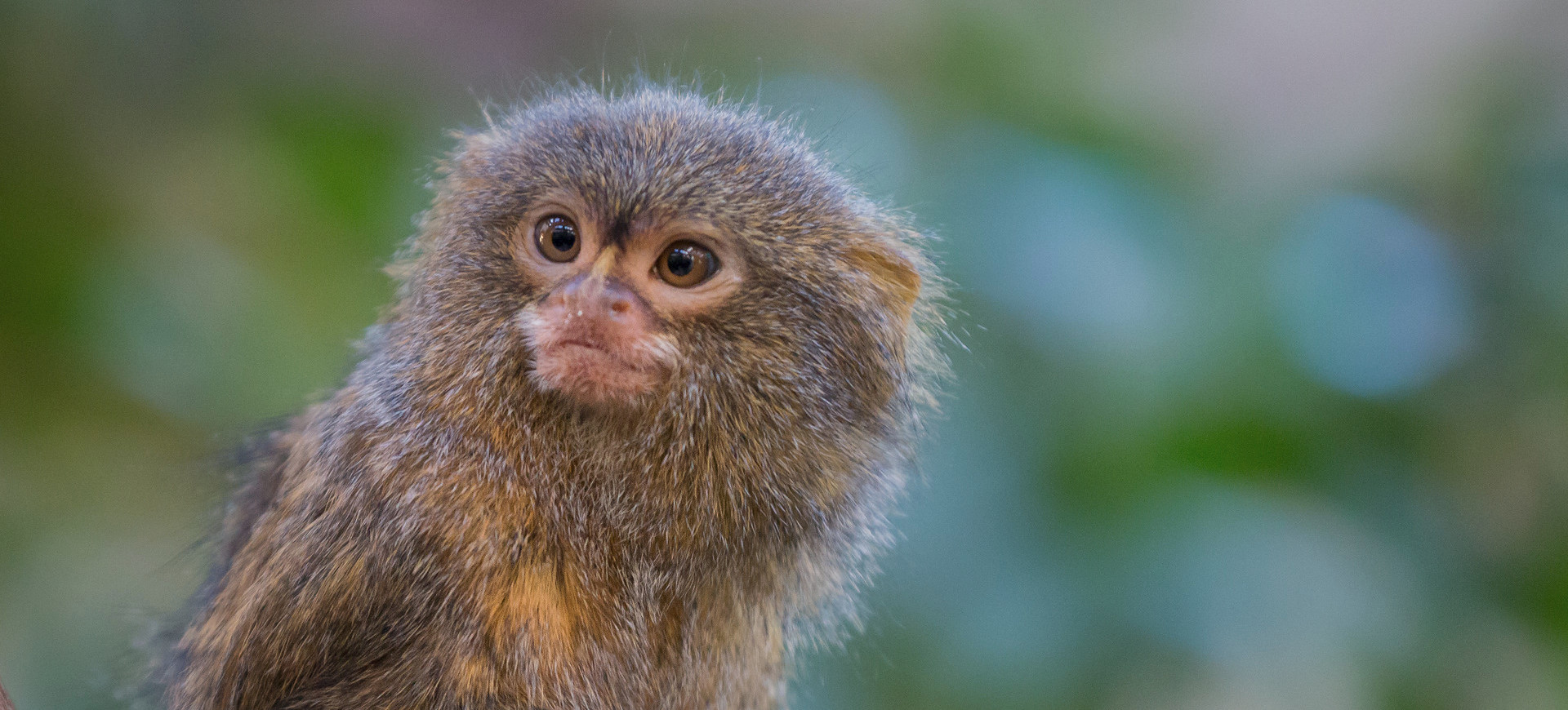Overview
The Cotton-top Tamarin (Saguinus oedipus) is a diminutive primate famous for its distinctive fur. As the name suggests, this New World monkey features white hair sprouting from its head and flowing down its back, similar to a mane. Standing out against the Tamarin’s otherwise darkly colored body, this signature feature gives the animal an appearance akin to an elderly sage in certain human cultural contexts.
A small monkey native to the tropical forest edges and secondary forests in northwestern Colombia, the Cotton-top Tamarin is among the smallest primates, with the size of a squirrel. Its body is characterized by a lean build, allowing for graceful movement through the trees. It possesses the agility to leap across significant gaps between branches, making it a master of its treetop environment.
Despite its small size, the Cotton-top Tamarin is known for its complex vocalizations, constituting an important part of its social interactions. These calls vary greatly and are used for different purposes, such as maintaining group cohesion, sounding alarms, or expressing emotional states. Researchers have suggested that these monkeys have one of the most sophisticated vocal communication systems in the non-human primate world.
Taxonomy
Kingdom
Phylum
Class
Order
Family
Genus
Species
Type
Physical Description:
The Cotton-top Tamarin exhibits sexual dimorphism, though slight and mainly related to size. Its body is coated in dense fur that varies from white to dark brown. The signature “cotton top” consists of long, white sagittal crest hairs extending from the forehead to its shoulders, contrasting against the darker fur on the rest of its body.
Both male and female Cotton-top Tamarins have claw-like nails or tegulae on all digits except the big toe. They have an underdeveloped thumb that does not oppose the other fingers, and their hands resemble those of squirrels in function. Their faces are exquisitely expressive, possessing features that can portray emotions integral to their social structure.

Lifespan: Wild: ~16 Years || Captivity: ~24 Years

Weight: Male: 0.99 lbs (0.45 kg) || Female: 1.08 lbs (0.49 kg)

Length: Male: 8.3 in (21 cm) || Female: 8.8 in (22.5 cm)

Height: Male: 9.3 in (23.6 cm) || Female: 9.8 in (25 cm)

Top Speed: 24 mph (38.6 km/h)
Characteristic:
Native Habitat:
The Cotton-top Tamarin is indigenous to the tropical forests of Colombia, South America. They prefer secondary forests or the edges of tropical rainforests where plant gums are abundant, which constitute a large part of their diet. These monkeys are arboreal and live in the middle to lower levels of the forest canopy, where they spend most of their time foraging and engaging in social activities.
Their habitats are often characterized by high rainfall and humidity, with relatively stable temperatures throughout the year. The forest provides abundant food sources, including fruits, insects, and plant exudates. The complex, layered structure of the forest also offers a multitude of hiding places from predators.
Climate Zones:
Biomes:
WWF Biomes:
Biogeographical Realms:
Continents:
Countries:
Diet:
Diet & Feeding Habits:
The Cotton-top Tamarin has a varied diet which predominantly includes plant gums, nectar, and various types of insects. They also occasionally consume small vertebrates, making them an omnivorous species. Their eating habits contribute significantly to the dispersion of seeds in their habitats, thus playing an important role in the ecosystem.
Their small size allows them to navigate and forage effectively in the mid to lower levels of the forest. They use sharp, elongated lower incisors to gouge tree bark. This creates an opening from which they can extract gum, a dietary staple when the fruit is scarce.
Mating Behavior:
Mating Description:
Cotton-top Tamarins exhibit a unique mating system known as cooperative polyandry, where one dominant female mates with multiple males who help rear her offspring. The mating season does not occur at a specific time and can happen throughout the year.
The female’s estrus cycle lasts 15-17 days, and after mating, she undergoes a gestation period of approximately 183 days. The female usually gives birth to twins, and the male, along with the older offspring, assists in caring for the young, a trait uncommon in most primate species. This cooperation extends to grooming, carrying, and protecting the infants, allowing the mother to recover and possibly reproduce again quickly.
Reproduction Season:
Birth Type:
Pregnancy Duration:
Female Name:
Male Name:
Baby Name:
Social Structure Description:
Cotton-top Tamarins live in small, cooperative groups composed of an adult pair and their offspring. This structure is matriarchal, with one female dominating the group’s reproductive function. The rest of the group, including the breeding male and the older offspring, share in infant care responsibilities.
Communication within the group is complex, involving a wide array of vocalizations, facial expressions, and body postures. They mark their territories with scent glands on their chest and perineal area. These groups are generally territorial but exhibit a high level of tolerance towards neighboring groups.
Groups:
Conservation Status:
Population Trend:
The Cotton-top Tamarin population has experienced a drastic decline over the past several decades due to habitat loss and the illegal pet trade. Their native range in Colombia has faced significant deforestation due to agricultural expansion, urban development, and logging. This has resulted in fragmented populations that are more vulnerable to local extinctions.
Moreover, their small size and endearing appearance have made them a target for the illegal pet trade. During the mid-20th century, many were exported for biomedical research, contributing to their status as one of the world’s most endangered primates.
Population Threats:
The Cotton-top Tamarin faces numerous threats, with habitat destruction being the most significant. Large-scale deforestation due to agriculture, logging, and urban development has resulted in severe habitat fragmentation, posing a grave threat to this species. Such fragmentation reduces the availability of food resources and limits their capacity for dispersion and reproduction, leading to a decrease in genetic diversity.
In addition to habitat loss, the Cotton-top Tamarin is threatened by the illegal pet trade. Despite protective laws, they are often captured and sold as pets, largely due to their small size and attractive appearance. This has had a devastating impact on their population and continues to be a critical conservation concern.
Conservation Efforts:
Several measures are being undertaken to conserve the Cotton-top Tamarin. These include habitat protection and restoration, enforcement of laws against illegal pet trade, and raising public awareness about the species and its threats. For example, the Proyecto Tití program in Colombia has been instrumental in providing education, promoting sustainable livelihoods, and implementing field research and conservation programs.
Captive breeding programs in zoos worldwide also play a critical role in conserving Cotton-top Tamarins. These programs aim to maintain a genetically diverse population in captivity, which could potentially be used for reintroduction into the wild in the future. However, such initiatives must be paired with protecting and restoring their natural habitats.
Additional Resources:
Fun Facts
- Cotton-top Tamarins have over 38 different types of vocalizations to communicate different messages.
- Despite their small size, they have powerful teeth that can chew through tree bark to get to the gum and sap inside.
- They are among the few species where the male equivalent is often responsible for carrying the young.
- Twins are the norm for Cotton-Top Tamarin births, not the exception.
- They play a vital role in their ecosystem as seed dispersers, helping to regenerate the forest.
- Cotton-top Tamarins use their long, thin fingers to probe into crevices for food, showcasing their adaptability.
- These tamarins are monogamous, often mating for life.
- They display a unique social structure, where subordinates in the group help care for the offspring of the dominant pair.
- Cotton-top Tamarins can rotate their heads 180 degrees to watch for potential threats.
- Despite the grim prospects of their wild populations, Cotton-Top Tamarins breed well in captivity, contributing to conservation programs.





